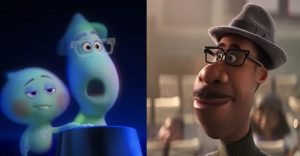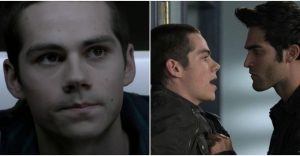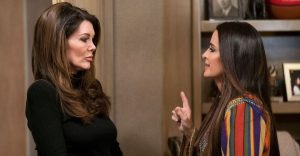10 Sci-Fi Visual Effects That Changed Movies Forever

The genre of Science Fiction pushes new boundaries by envisioning potential futures and the resulting moral quandaries. In the medium of film, bringing to life these high concept ideas often forces filmmakers to invent new tools for storytelling. As a result, many of the most important special effects innovations came from the sci-fi genre.
Science fiction films are responsible for key innovations in camera techniques, prosthetics, and computer-generated imagery. Here are just a few of the most significant visual effects from the sci-fi genre that changed movies forever, in chronological order.
10 Metropolis (1927) – The Schüfftan Process

Directed by Fritz Lang, Metropolis is a German expressionist sci-fi movie whose style and innovations went on to influence some of the greatest science fiction movies of all time. Not only is the film visually impressive for the era, but it also pioneered a new special effects technique called The Schüfftan Process.
The Schüfftan Process was invented as a way to combine live-action elements with models or images. Using a mirror at a specific angle in front of a camera, the image of a model or painting is projected against live-action actors or sets. In Metropolis, the process was used to insert miniatures of futuristic skyscrapers behind live actors in way that made the miniatures look full scale.
9 2001: A Space Odyssey (1968) – Star Gate Sequence

Stanley Kubrick’s science fiction masterpiece 2001: A Space Odyssey is chock full of awe-inspiring imagery. This film took special effects experimentation to a whole new level. However, one visual effect in the film has a lasting impact on viewers to this day, and that’s the Star Gate sequence.
Special effects artist Doug Trumbull employed the use of slit-scan photography for the creation of the mesmerizing visual effect. He shot the scene over and over again to ensure that it was perfect, and the final results are mystifying.
8 Star Wars (1977) – The Lightsaber

When Star Wars came out in 1977, the film industry changed forever. Hollywood immediately scrambled to recapture the lightning in a bottle that spawned one of the biggest franchises of all time. Not only did Star Wars invent the modern summer blockbuster, but it also pioneered never-before-seen special effects.
Perhaps the most iconic of these special effects in the lightsaber. The realization of the elegant Jedi weapon is impressive in that it is both visual and aurally iconic. The sound effect of the lightsaber is just as, if not more significant than the visual effect. Both paired together make for an enduring piece of pop culture magic.
7 Alien (1979) – The Xenomorph

The Xenomorph design from Alien completely redefined what on-screen extraterrestrials ought to look like. Equal parts insect, skeleton, and technology, the look of the Xenomorph is entirely unmatched by any other cinematic alien. While it’s gone through slight redesigns over the years, the key aspects of the Xenomorph’s look have remained mostly the same.
Designed by H. R. Giger, the look of the Xenomorph from 1979’s Alien is timelessly terrifying. The look of the costume is both slick and armoured looking, which perfectly compliments the insectoid qualities of Giger’s design.
6 The Thing (1982) – Practical Monster Effects

John Carpenter’s The Thing uses a sense of paranoid isolation and fantastically freaky monster designs to evoke terror. Given that there was no CGI at the time, it is incredibly impressive that every creature effect in this movie still holds up to this day.
Each and every design feels like a violation of the human body, with unnatural limbs and movements that are remarkably executed. The spider-head sequence and dog sequence are both timeless examples of the effectiveness of high-quality practical effects.
5 The Fly (1986) – Facial Prosthetics

Often when actors have to wear heavy facial prosthetics in films the result is a weaker performance. Facial prosthetics have a tendency to limit an actor’s ability to express emotion. The fantastic visual effects work on 1986’s The Fly somehow manage to be extremely detailed while also allowing Jeff Goldblum to act.
A key aspect of The Fly‘s horror is watching a character’s body change in frightening ways. It is so important that Goldblum is able to effectively convey the feeling of not recognizing oneself in the mirror. The excellent facial prosthetics in this movie elevate the horror to another level by being both disgusting and articulate.
4 Terminator 2: Judgement Day (1991) – Liquid Metal CGI

The liquid metal Terminator in Terminator 2: Judgement Day is one of the earliest uses of impressive CGI. Audiences at the time were blown away by the convincing look of the liquid terminator, as this level of CGI has never been successfully executed before.
The visual effect helped pioneer the mainstream use of computer-generated effects, proving that the technology had come far enough to be implemented in big-budget blockbusters. It would still be a while before CG would be indistinguishable from the real thing, however, it’s implementation in Terminator 2 was so good that it still looks on point today.
3 Jurassic Park (1993) – Dinosaurs

As CGI was becoming more widely used in filmmaking, 1993’s Jurassic Park completely upped the ante in how to use it. To this day, the dinosaur special effects in this film are completely believable. The look of this film has aged extremely well. Jurassic Park uses a considerate blend of practical effects and CGI, which a technique that is still used to this day.
Jurassic Park set the standard for how to use CGI well. Practical effects were used as much as possible, but when doing it practically doesn’t work or isn’t 100% convincing, CGI was implemented to punch it up. The result is an almost thirty-year-old movie with special effects that have aged amazingly well.
2 The Matrix (1999) – Bullet Time

After The Matrix came out in 1999, almost every sci-fi and action movie was trying to evoke the iconic style. Trench coats and hackers were the new big trend, along with slow-motion bullet time. Now, The Matrix didn’t invent bullet time, but its implementation of the technique is what popularized it.
The Wachowski’s achieved their classic bullet time effect by surrounding a sequence with dozens of meticulously placed cameras. Shooting several angles of the same moment at once plus some editing magic resulted in some of the most iconic action-movie visuals of all time.
1 Planet Of The Apes Series (2011 – 2017) — Motion Capture

The most recent iteration of The Planet Of The Apes is not the earliest example of motion capture technology used in a film, but it is the most successful at its implementation. Previous uses of motion capture were great, but this trilogy elevated it to excellence. All three movies belong on this list because viewed together one can see how the technology improves over time.
Particularly in the latter two films, motion capture technology is so strong that there is an increasing focus on characters who are entirely animated. Despite being fully animated, their emotions and relatability are better than ever.
About The Author
















